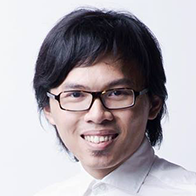A few weeks ago, I took a trip to Bujang Valley. Popularly known as Lembah Bujang, the valley is the focal point of Hindu/Buddhist propagation in Southeast Asia during the third to 12th century.
 As early as the first century, Indian traders came to the valley and brought a host of foreign elements which were embraced by and influenced the locals, thus beginning the process of "Indianisation" in what is today known as Malaysia.
As early as the first century, Indian traders came to the valley and brought a host of foreign elements which were embraced by and influenced the locals, thus beginning the process of "Indianisation" in what is today known as Malaysia.
According to professor Kernial Singh Sandhu, "Indianised" and "Indianisation" are terms associated with the process which established a cross-cultural link between India and Southeast Asia, and by means of which Indian, particularly Hindu and Buddhist, cultural traits were transferred from the subcontinent to Southeast Asia.
The former director of the Institute of Southeast Asian Studies added, "The Indian era of Malayan history (up to AD 1511) was the period when Indianised kingdoms flourished in Malaya and elsewhere in Southeast-Asia, either as semi-independent city-states or under the hegemony of some controlling power, also Indianised and generally based outside Malaya.
"It falls under two broad divisions – the age of the city-states (up to 1400), when the focus of attention was the isthmian tract of the Siamo-Malay peninsula, and the period of the Malacca sultanate (1400-1511), when the centre of attention was the Straits of Malacca."
Other than Lembah Bujang, Indian traders also culturally and religiously influenced Sumatra and Java.
They not only plied their trade in the region but also interacted with the locals. That interaction, over a period of a millennia, resulted in a lasting influence on languages, rituals, system of governance, divinity of the monarch, court ceremonies, social classes, dance, mythologies and even class and ruling structure.
We often compress these vast-ranging influences into "cultures" or "traditions", but this broad terminology certainly does not do justice to the deep influences of the Indians in Malaya.
The Hindu-Buddhist heritage of the Malay world, brought by the Indians, is in stark contrast with the rigidly defined notion of ethnicity and religion today.
The fluidity of movement no longer exists. Legal and societal barriers are constructed to eradicate remnants of fluid identity, which confuses and blurs the "fixed" identies of ethnicity and religion. Now, we cannot entertain the idea of a Malay being anything other than a Muslim.
The present disowns and refuses to come to terms with its past, as if their Indianised history, or the Indian era of Malaya, is impure.
The past is something to be buried, not celebrated. To be avoided and a lesson not to repeat.
The present imagines and longs for the glory days of the past, but without the rich interaction, open-mindedness and variety of identity.
The distinct variants of personal identity from the past, where the lines between ethnicity and religion are not so clearly drawn, are looked at with disdain – the reason being the existence of a historical past could alter and challenge the image of an identity they want to be today.
In this sense, the attempt of the state to subdue the wayang kulit symbolises the present psyche and its treatment of the historical past, which is a living counter-evidence of the rigid notion of ethnicity and religion.
The trip to Lembah Bujang and subsequent contemplation reminded me of the time when I first learned about the history of Buddhism.
Up until then, I had always thought that Buddhists were Chinese, because that’s the norm in Malaysia. How could Buddhism and Buddha himself be anything other than Chinese?
Imagine the shock when the fifteen-year-old me discovered that Siddhartha Gautama was born and lived in what is known today as Nepal. Surely he is not as fair-skinned as portrayed in Chinese dramas. And he sure doesn’t speak Mandarin.
The first Buddhists were not Chinese either. For the first few centuries, the followers were mainly Indians.
As hard as it is to accept that reality, so contrary to what I observe around me, it is a historical fact regardless of whether or not I like it.
We could say the same of Jesus. Contrary to popular media portrayals, Jesus was Middle Eastern, not white, and did not speak English.
Whether it’s Hindu, Buddhist, Muslim or Christian, the community of the faith encompasses a following larger than can possibly be confined to ethnicity.
To use a political reference, the community of the faith is, and ought to be, a Big Tent party. If we only open our eyes to see not only the past, but also the diversity of the community of faith around the world, perhaps we may not be so quick to jump the gun and relate ethnicity with religion.
The deeply intertwined relationship between ethnicity and religion in Malaysia and our parochial view of that relationship only fails spectacularly when examined by historical facts.
The dynamic and fluid movement in the past puts to shame our present rigid and unexamined philosophy. It is not that religion or ethnicity is a narrow anachronistic concept. It is we who refuse to come to terms with our historical, plural and fluid identity. – January 9, 2016.
* This is the personal opinion of the writer or publication and does not necessarily represent the views of The Malaysian Insider.


Comments
Please refrain from nicknames or comments of a racist, sexist, personal, vulgar or derogatory nature, or you may risk being blocked from commenting in our website. We encourage commenters to use their real names as their username. As comments are moderated, they may not appear immediately or even on the same day you posted them. We also reserve the right to delete off-topic comments